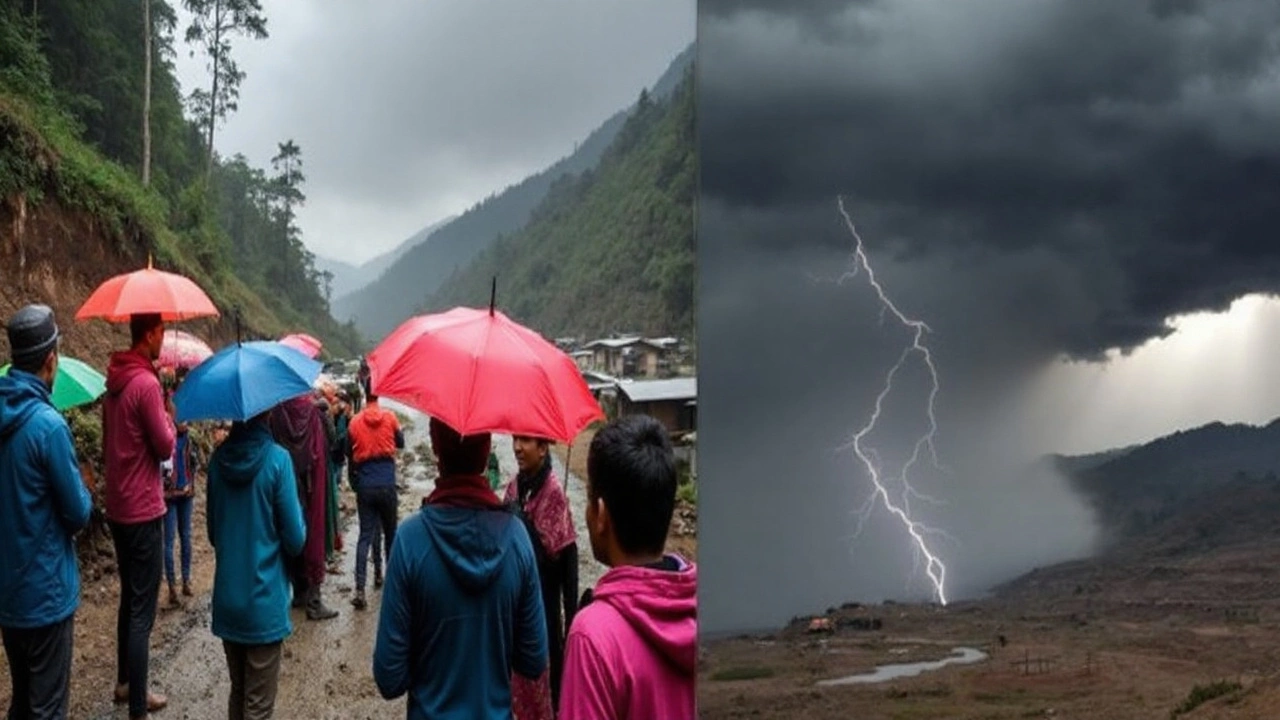Cloudburst Updates: Stay Ahead of Heavy Rain and Flood Risks
When the sky suddenly dumps a massive amount of water, it feels like nature just hit the fast‑forward button. That sudden downpour is called a cloudburst, and it can turn streets into rivers in minutes. If you live in or travel through parts of India that get hit by monsoon storms, you’ve probably seen the chaos – water‑logged roads, evacuated homes, and flight delays. This page pulls together the most recent cloudburst stories, gives you a quick snapshot of where the danger is, and shares simple steps to stay safe.
Recent Cloudburst Events in India
Over the past few weeks, the India Meteorological Department (IMD) has issued red and orange alerts for several states. In North India, relentless rain caused the Yamuna to rise close to its 1978 peak, forcing flight cancellations at Delhi’s IGI Airport and prompting police to divert traffic on the Outer Ring Road. Punjab faced its worst floods since 1988, with whole villages underwater and rescue teams deploying boats.
Further east, a low‑pressure system over the Bay of Bengal is set to drench 13 states, bringing intense downpours, strong winds, and flash‑flood warnings. Jammu & Kashmir is also on the watch list for above‑average September rain, with landslide alerts for mountain trails. If you’re in any of these zones, the IMD alerts move from yellow to red as the situation worsens, so keep an eye on local updates.
What to Do During a Cloudburst
First, don’t ignore the warnings. If the IMD issues a red alert, treat it like a real emergency. Pack a small emergency kit – water, snacks, a flashlight, and a portable charger – and keep it handy at home or in your car. If you hear a sudden roar of water, move to higher ground immediately; low‑lying areas can flood fast.
Second, protect your belongings. Store important documents, electronics, and valuables in waterproof bags or move them to higher shelves. If you live in a flood‑prone neighbourhood, consider sandbags around doorways to slow water entry.
Third, stay connected. Follow reliable news sources, the IMD app, or local authorities on social media for real‑time updates. Share your location with family members so they know you’re safe. And if power goes out, conserve battery life – only use your phone for essential communication.
Finally, after the water recedes, be cautious about hidden hazards. Check for structural damage before re‑entering homes, watch out for electric shocks, and avoid standing water that might be contaminated.
Cloudbursts are unpredictable, but with the right info and quick actions, you can reduce the impact on you and your loved ones. Bookmark this page, refresh for new stories, and stay ahead of the next big downpour.

IMD has warned of heavy to very heavy rain across Uttarakhand in the next 24 hours, with a cloudburst reported in Tharali, Chamoli. Dehradun has a 90% chance of rain with 23°C temperatures and southeast winds. Authorities are on high alert for landslides and flash floods, especially from Dehradun to Bageshwar. The warning follows earlier IMD advisories this month about intense monsoon activity.
